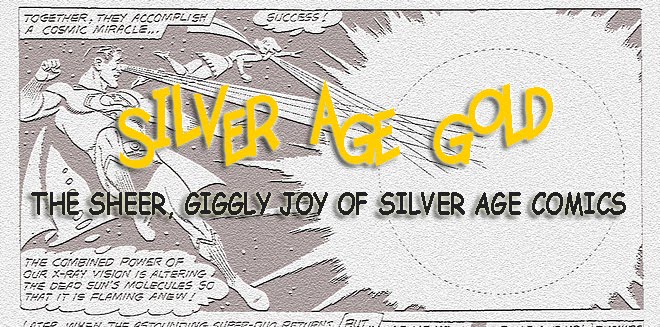
To say that Batman and Robin were a huge commercial success would be a vast understatement. True, Batman sold well for the eleven months he existed prior to adding his now-famous sidekick, but nothing like the household name he would become simply by adding a spunky kid to the team.
The combo was so successful, that every comics company rushed to imitate it, adding junior partners to their established heroes (often just a miniature version of the adult hero, such as the Human Torch's buddy, Toro) even DC itself. Few of these duos were very dynamic. Still, it had worked once, it would work again.
Not only did DC slap sidekicks on many of their existing heroes ( and by the Silver Age there were enough of these scamps to form their own team-the Teen Titans) and create heroic duos from whole cloth (Green Arrow and Speedy, for example) they also gave us an endless string of Batman and Robin wanna-be's.
Let me elaborate on that. I don't mean just pale imitations of Batman and Robin, I mean that, within the context of the Batman and Robin comics, the Dynamic duo encounter myriad crime-fighters who have based their careers on those of Batman and Robin. The Knight and Squire may be the most famous.

My personal favorite are B&R's Native American counterparts from the Southwest- Chief Man-of the Bats and Little Raven!

But, as mentioned, this formula for success was not limited to the pages of Batman. DC felt that what was good for the goose was good for the gander. Therefore, what had been good for Batman would have to be super for Superman. Enter Nightwing and Flamebird:

Not content to simply go around fixing all of Earth's problems, Superman decides he needs to also fight crime in the bottled city of Kandor.
For those who don't know, Kandor is a city that was shrunken, placed in a bottle and stolen by Brainiac all before Krypton exploded. Kandor currently resides on a table in Superman's Fortress of Solitude, where it sits under a red sun lamp (can't have a whole city of Supermen running around, can we?). Whenever Superman uses his shrink ray and stops by for a visit, he has no superpowers.
So, how will Superman fight crime in Kandor if he's not... super? He'll do it Batman-style. And he takes that lovable doofus, Jimmy Olsen along with him to play Robin.
Superman names himself Nightwing and Jimmy Flamebird, after two Kryptonian birds. He fashions costumes based vaguely on the birds' plumage. Pretty soon, they have a Nightcave, Nightmobile and even a Nighthound. Of course, Nightwing and Flamebird are a little spoiled by being Superman and Superman's Pal, so they wear jetbelts that allow them to fly.
 "Er- ahem, that's NightWING, Jimmy!"
"Er- ahem, that's NightWING, Jimmy!"
What's really remarkable, is that this concept didn't just yield a couple of memorable stories and vanish. In fact, Nightwing and Flamebird were one of the back-up features in
Superman Family well into the 1970's- although at that point, Nightwing was Superman's cousin Van-Zee and Flamebird was Van-Zee's lab assistant, Ak-Var. (if you'd like to read one of those nifty stories, check out
Diversions of the Groovy Kind)
Nowadays, if you mention Nightwing, people think of Dick Grayson after he quit being Robin. And Flamebird was also used again in Teen Titans, this time as a new name for the original Batgirl, Bette Kane.
The names have since been recycled several times.
Still, even though it was a throw-away idea that really broke no new ground, Nightwing and Flamebird's adventures were tremendously fun.





















































